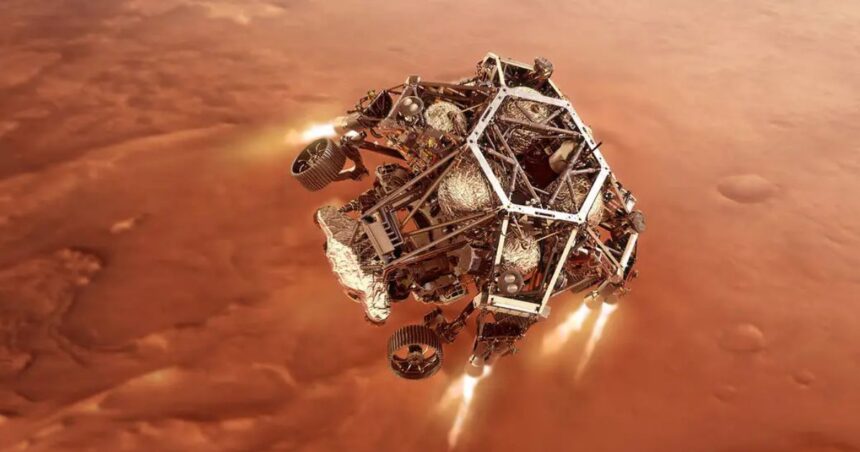A groundbreaking development in space technology promises to revolutionize spacecraft landings: controlled propulsion systems designed for gentle landings. This innovation could change how we approach space missions, ensuring safer and more precise landings.
Controlled propulsion involves using precise thrust adjustments to slow a spacecraft’s descent and ensure a gentle touchdown. Traditional methods often rely on parachutes or air bags, which can result in hard landings. Controlled propulsion systems, on the other hand, use small thrusters to finely control the spacecraft’s speed and trajectory as it approaches the surface.
One of the key advantages of controlled propulsion is its ability to handle complex landing scenarios. Space missions often involve landing on rocky or uneven terrain, where traditional methods may not be reliable. By using controlled propulsion, spacecraft can adjust their landing approach in real-time, avoiding obstacles and ensuring a smooth touchdown.
This technology has been tested on several missions, with impressive results. SpaceX’s Falcon 9 rocket uses a controlled propulsion system to land its first stage boosters back on Earth, demonstrating the technology’s potential. The precision and reliability of these landings highlight the benefits of controlled propulsion for future space missions.
In addition to improving landing safety, controlled propulsion can also extend the lifespan of spacecraft. Gentle landings reduce the stress and impact on the spacecraft’s structure, minimizing the risk of damage. This is particularly important for missions that involve multiple landings, such as lunar or Mars exploration missions.
Controlled propulsion systems are also more versatile than traditional landing methods. They can be used for a variety of missions, from landing rovers on the surface of Mars to returning samples from asteroids. This flexibility makes controlled propulsion an attractive option for future space exploration efforts.
The development of controlled propulsion technology is a collaborative effort, involving engineers and scientists from around the world. By working together, they have made significant advances in the precision and reliability of these systems. The ongoing research and development will continue to improve the technology, making it even more effective for future missions.




